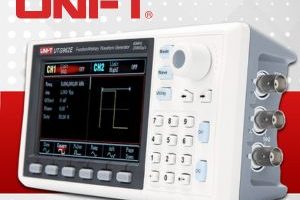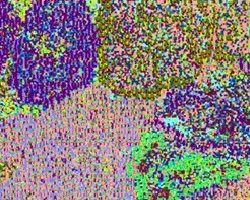
With the government soon to announce a date for switching off the nation’s FM radio broadcasts it is time for digital radio to clean up its act, write Richard Morris, Wayne Dickson and Paul Harfoot
It’s now over fifteen years since DAB digital radio switched on in the UK. Coverage and listenership has increased steadily since then and the industry is starting to plan for Digital Radio Switchover. When this happens, major stations will switch off FM services and rely solely on their DAB transmitters.
The UK government has stated that they will announce the date switchover will occur when certain conditions have been met. These targets will be reached when 50% of listening is to digital services, and when DAB coverage matches current FM coverage.
Much work is being planned to improve coverage. The industry is planning to increase the power of many existing transmitter sites and to build hundreds of new ones. However all this work is expensive. It may also be possible to increase the effective coverage of existing transmitters without altering the radiated power.
Digital radio coverage is limited by noise. It is the carrier to noise ratio at the receiver which determines if the audio content can be decoded. If the received signal is above a certain threshold the receiver can perfectly recreate the transmitted signal. If the signal is below that threshold it is rapidly degraded. It is desirable to reduce the amount of noise in the system.
The noise present in the receiver comes from many sources. In an ideal world, the thermal noise in the receiver would be the limiting factor, but in many cases interference is the dominant source of noise. Interference can come from the background noise generated by household objects (such as TVs, computers, fluorescent lights and many other objects).
It can also come from distant digital radio signals on the same frequency (known as co-channel interference) – or very strong signals on similar frequencies (known as adjacent channel interference). Another source of interference is noise generated within the transmitter itself and radiated along with the wanted signal.
The noise generated in digital transmitters consists largely of intermodulation (IM) products and phase noise generated in the modulation process. IM products can be reduced by pre-correction and are measured by observing the level of the “shoulders” visible on a spectrum analyser connected to the transmitters output, with an example shown here having shoulders lower than -37dB.
This method cannot measure the noise present within the bandwidth of the DAB signal; the observer can only assume that the noise within the bandwidth of the DAB signal is similar to that observed at the edges. This method of measuring noise within the DAB signal is commonly used because it is easy to do, and for many years there was no better method available.
Noise products are also very important in Digital TV transmission, and a method was developed to measure these. The Modulation Error Ratio is a measure of in band noise.
In an ideal QAM transmitted signal – each radiated symbol would be represented as a discrete dot at a precise point on a vector display; with 4 such dots visible for a DAB 4 QAM signal.
In reality, each symbol transmitted will have small but finite error associated with it (due to noise generated in the modulator and amplifier). This noise means the “dot” on the constellation diagram will fall a measurable distance from the ideal point.
This can be considered as an error vector (?I +?Q) on top of the wanted vector (I +Q).
The MER method for quantifying noise was developed for DVB and is described in the ETSI document ETR 290. The magnitude of each wanted signal vector and each error signal vector is given by the sum of the squares of their I and Q components.
If measurements of the error vectors present on each of “N” carriers is made, then the MER of the signal is the ratio of the sum of the squares of the error vectors divided by the sum of the squares of the wanted vectors. MER is merely a measure of signal to noise calculated by comparing a measured signal with a theoretical “ideal” signal, and averaging the result over several symbols.
Although MER was originally used to measure the quality of DVB transmissions, it is also useful in measuring DAB digital radio signals. As mentioned above, the “quality” of DAB radio signals is typically measured by observing the “shoulders” of the signal at the output of the DAB transmitter, before any external filtering has been applied.
This method is rather crude and does not always tell the whole story – as the following case study from Australia shows.
In 2009 Commercial Radio Australia commissioned high power digital radio transmitters in five major cities. Using the conventional “shoulder measurement” the on-air transmitter performance looked satisfactory with a shoulder height exceeding 37dB.
However, when the output was monitored a different picture emerged.

RF plot of transmitter output.

Plot showing constellation diagram of transmitted signal before modification
The results obtained using the Rohde & Schwarz ETL show that the transmitted signal contains a significant amount of phase noise, even though the shoulder height measurement would not suggest there is any problem. The MER varies across the bandwidth of the signal between 23.5dB and 17.5dB with an RMS figure of 19.8dB.
Any phase noise present in the transmitted signal will have an effect on receiver performance – and this can be shown graphically. Fig 5 shows the loss of margin available to cope with incoming interference when phase noise is present in the transmitted signal. The effect of MER on reception varies with the carrier to noise requirements of the receiver which in turn depends on the quality of the transmission path.
In a Gaussian channel, the DAB receiver only requires a signal to noise ratio of 8dB. In a complex reception environment with significant multipath effects and contributions from many DAB transmitters the carrier to noise requirement increases significantly – with a figure of 15dB required in some cases.
In the Australian case the poor MER figure resulted in signals that were less resistant to manmade noise such as generated by electronic items in a home or office environment.
In other countries with denser digital radio networks, such as the UK, the poor M ER figure would also result in poorer performance in areas of strong co-channel interference.
With an MER with an RMS value of 19.8dB and with MER figures reducing to 18dB on some carriers, the effect is to erode the margin available to resist co-channel interference by up to 1.7dB overall, and by over 2dB on some carriers. This is enough to have a significant effect on the reception of signals near the edge of coverage.
Fortunately, the issue discovered in Australia was relatively easy to resolve. A software update was developed which considerably improved the performance of the transmitters in service, and the MER was improved to a more acceptable figure of 25.8dB.
This result improves considerably the ability of the system to survive co-channel interference.
In the Australian example, this relatively simple software upgrade has resulted in effectively providing up to 2dB extra immunity to noise in the locations where the transmission channel makes good reception hardest to achieve.
This example shows that it is important to be aware of the MER performance of digital radio transmitters, as a system with a poor MER figure will have an impact on the reception area of radio signals. With modern transmitter designs MER figures greater than 33dB can now be achieved, generating a more robust signal and providing better in building coverage
Authors are Richard Morris from Signal Broadcast, Wayne Dickson from BTC Pty Ltd, and Paul Harfoot from Rohde & Schwarz
 Electronics Weekly
Electronics Weekly



